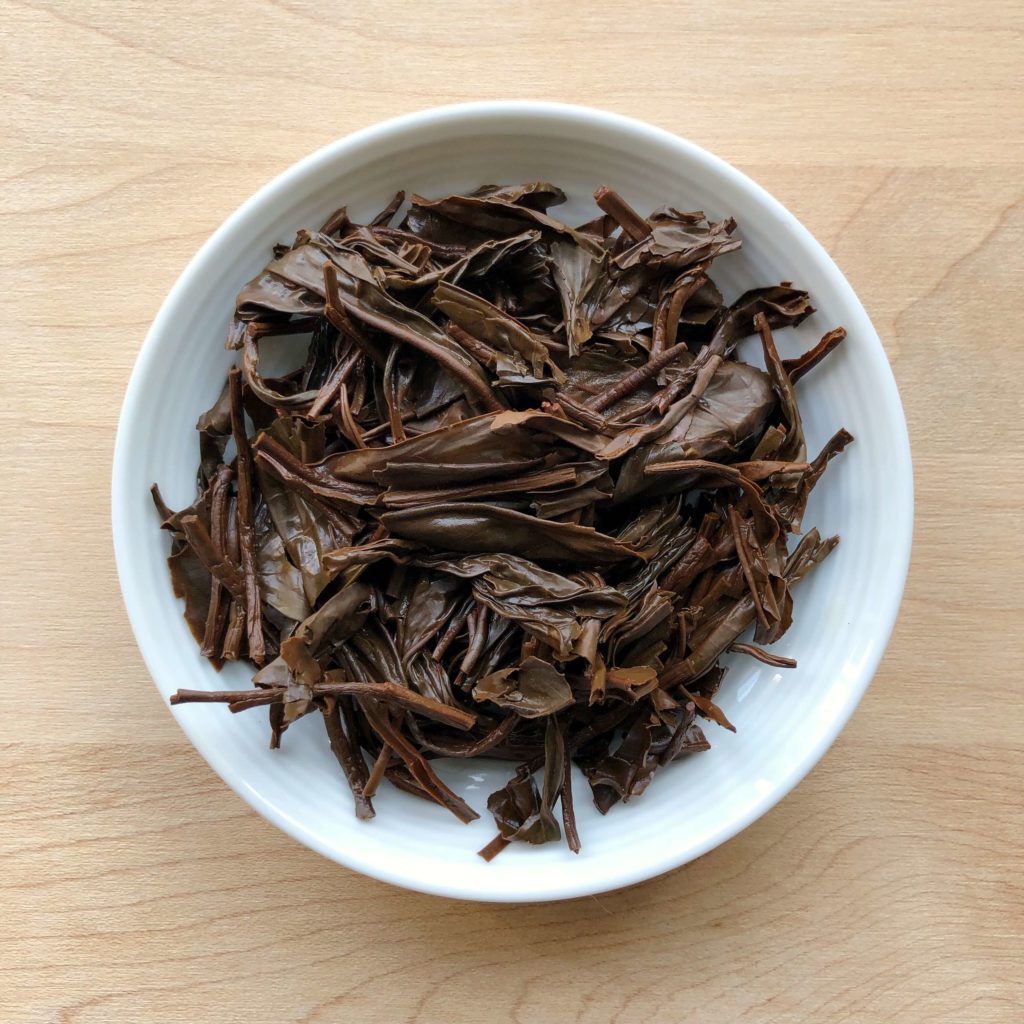
Last week, I embarked on my Ruby 18 tea adventure. I started with tasting a Burmese Assamica cultivar (the mother/flower used to develop Ruby 18) and now I will be tasting the native Camellia Formosensis (the father/pollen)!
Description: “Red Fruit, hints of spice, smooth half and fresh mushrooms if pushed hard with hot water!”
Instructions: Gong Fu Style: 5g per 100ml | 95°C (205°F) | 30, 45, 60 then add +15 seconds to taste (Note: these are the instructions from the label, as the website had slightly different recommendations)
Review: As mentioned in my last post, this is a three-part series about Ruby 18. Mountain Stream Teas created an origin tasting set of three teas as a result of a sourcing trip in the Sun Moon Lake area (where Ruby 18 was first developed). A farm was growing all three plants side-by-side (Burmese Assamica, Camellia Formosensis, and Ruby 18) and Mountain Stream Teas was offered the opportunity to try them together.

After I purchased this set, I knew I wanted to share that experience with everyone too! So, last week I tasted the “mother” of Ruby 18, a Burmese Assamica cultivate, so now let’s taste the “father,” the native Camellia Formosensis. Let’s go!
The dry leaves of the Sun Moon Wild Cultivar Black were a unified thin and wiry dark brown, almost black, colour. It smelled earthy, sweet, roasted, and charcoal. After adding it to the pre-warmed gawain, the smell of the leaves reminded me of muscatel grapes, lychee, flowers, yeast, and baked bread.
Infusion 1 (30 seconds): Despite a relatively short infusion, the liquor was a golden cooper reddish colour with a faint roasted bread smell and some tea leaves fragments at the bottom of the cup. It tasted earthy and malt with a fair amount of tannins that coated the tip of the tongue.
Infusion 2 (40 seconds): The liquor was a darker copper colour with mild smoke and an earthy smell. It tasted of smoked charcoal, wood, damp earth and had some sweet fruitiness at the end of the sip. The sweetness lingered in the mouth along with the dryness that coated the mouth.

Infusion 3 (60 seconds): The liquor was a brown cooper colour with a smoky and woodsy smell. The taste profile leaned more charcoal, roasted, and woody with notes of cherries and some astringency at the tail end of the sip.
Infusion 4 (1 minute and 15 seconds): The liquor was a brown colour and the flavour was starting to mellow out. It had some faint sweet, roasted, earthy, and charcoal notes with dryness at the back of the throat.
The brown wet leaves had unfurled fully by the end of the session and had a roasted earthy smell. I paired the tea with banana bread and the roasted qualities of the nuts and the crust melded well with the roasted quality of the tea. I also tried the tea with dark chocolate which also complimented the tea!
Like the Burmese Assamica cultivar, this tea also had some of the “classic” tea notes that one expects. However, I found this had less sweetness and more tannins than the Burmese Assamica. I personally like a sweeter malt black tea so I enjoyed that slightly the Burmese Assamica more. Regardless, I am curious to see which traits of both will be in the Ruby 18 next week (3/5 rating)!
- Type: Black tea
- Origin: Taiwan, Yuchi, Nantou, Sun Moon Lake Area
- Caffeine: Unknown
- Ingredients: Black tea
- Company: Mountain Stream Teas
The question of the post: Have you had a Camellia Formosensis before?
Edit: Nicole from Tea for me Please enjoyed my “uber tea nerdiness” and included my post in her weekly round up! Make sure to check out all the other posts that came out this week!

1 comment
[…] and what traits of each will be in the Ruby 18. Next week I will be posting my review about the Camellia Formosensis (3.5/5 […]